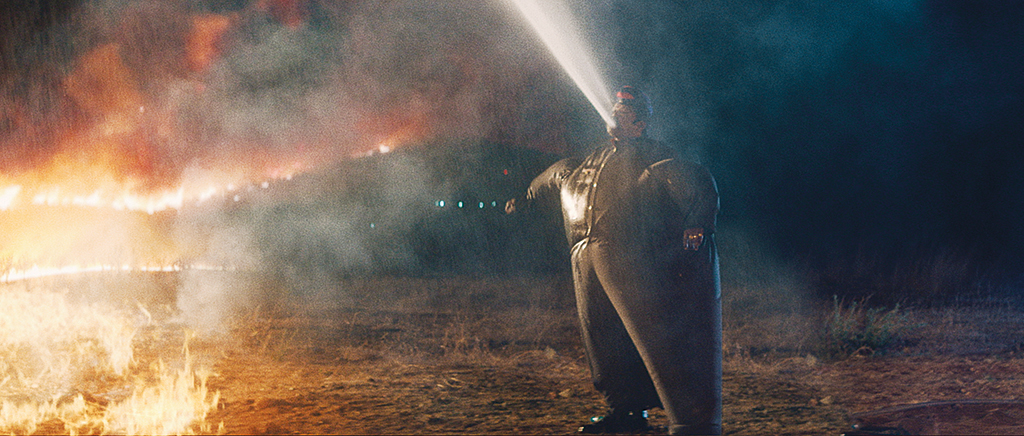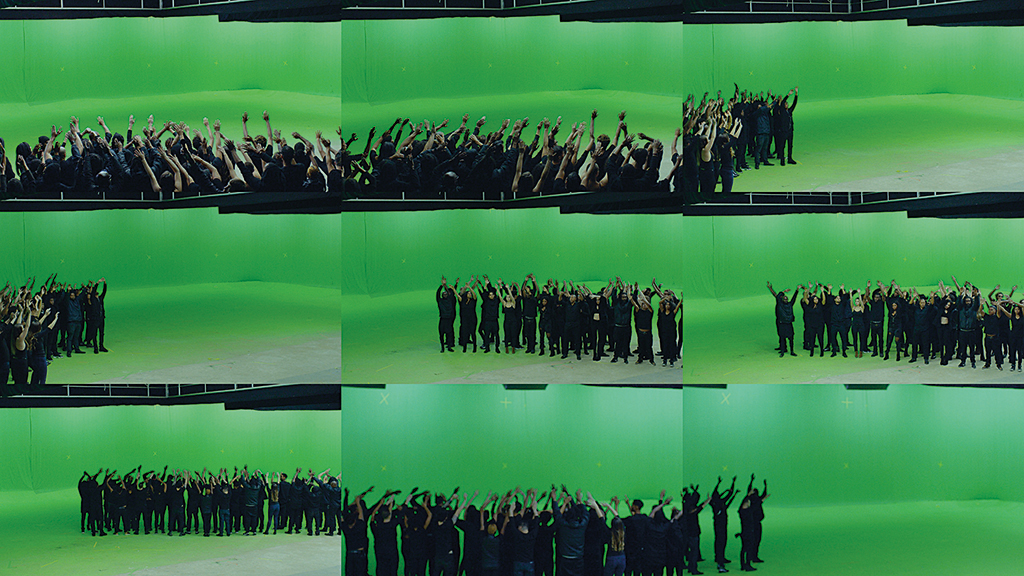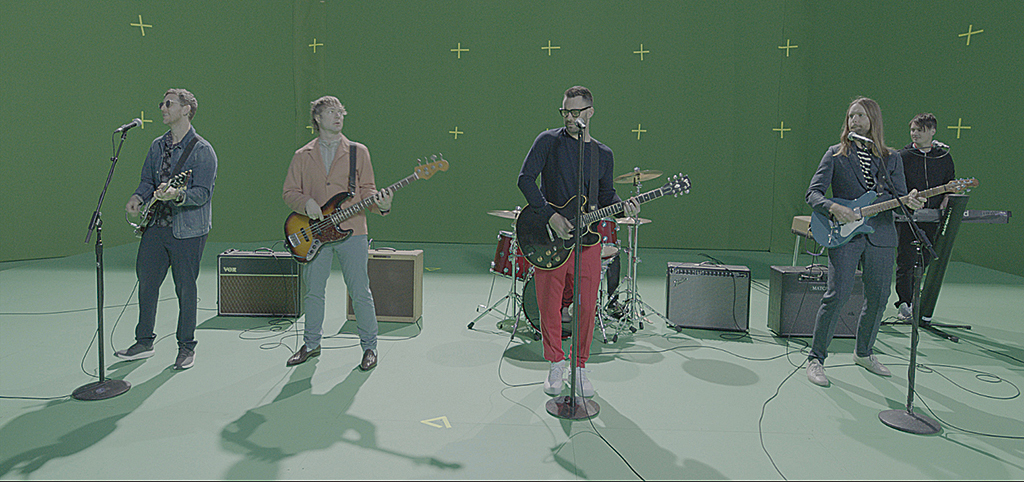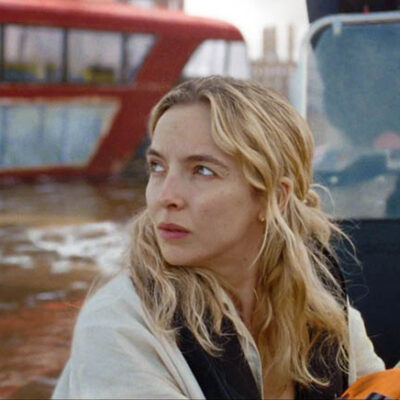Then there’s Maroon 5’s promo for their single “Three Little Birds.” It begins with the band members in a seemingly traditional setting with their instruments, until each is transformed into varying – and increasingly trippy – forms. Ingenuity Studios crafted these effects by augmenting both the band’s performance done against greenscreen and utilizing in-house motion capture of five separate dancers.
“For each of the band member’s effects,” outlines Ingenuity Visual Effects Supervisor and Creative Director Grant Miller, “we first needed to track the camera, then RotoMate a character, complete with instruments, over the top of their performance. Then, in addition to the dancer mocap, we also captured a variety of handheld camera moves which were used throughout the video.”
A number of simulation effects were used during the promo, with Miller noting that the water dancer was one of the toughest. “With fluid simulations like that we’re always up against time. It was one of the first looks that we locked down, but one of the last to be completed, as every aspect is just painfully slow. The body made of cars was another challenging one. Getting the cars to pass smoothly over the body’s surface and appear to be in continuous motion required a lot of visual trickery, scaling cars away and playing things to the camera heavily.”
Ingenuity Managing Director Mike Lebensfeld says “Three Little Birds,” along with Taylor Swift’s “Blank Space” – which itself has more than 2 billion views on YouTube – stand out as some of the studio’s most memorable videos in recent times, with hugely visually interesting and creative VFX work required.
“On the surface, ‘Blank Space’ doesn’t look like a VFX-heavy video,” notes Lebensfeld. “However, it included a fully CG Shelby Cobra that we had to dent, tons of fog and atmosphere, and a few other surprises we swore never to reveal. It also represented the return of big-budget music video-making that ended up winning an Emmy award for its VR component. On the other hand, ‘Three Little Birds’ was a total greenscreen video with a ton of ‘in-yourface’ VFX that aren’t exactly invisible and represented this return to ‘big-budget Hollywood-level filmmaking’ in music videos.”




























